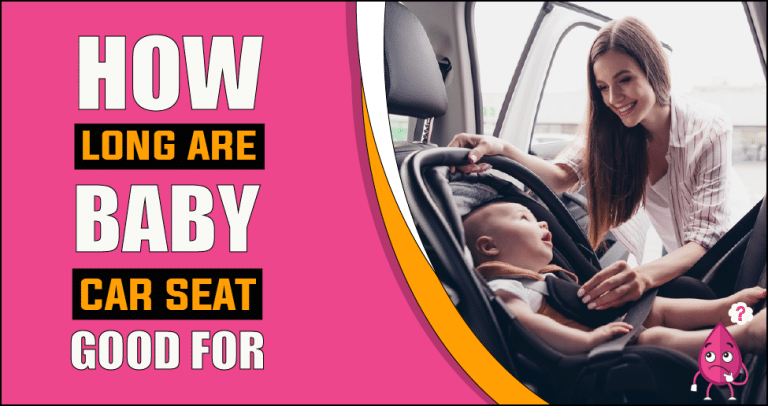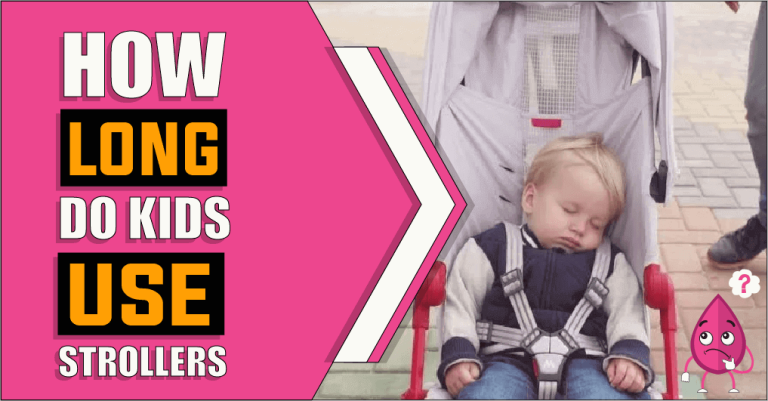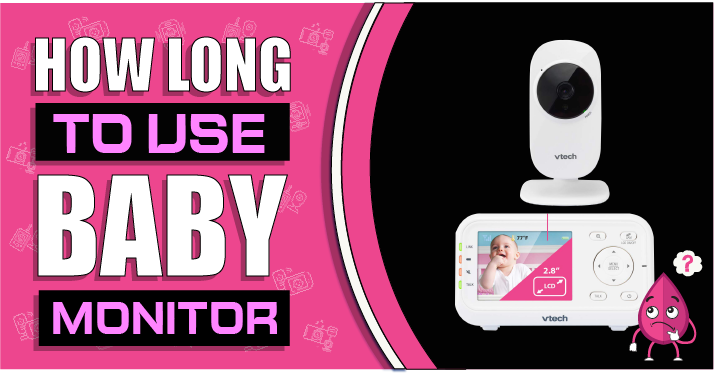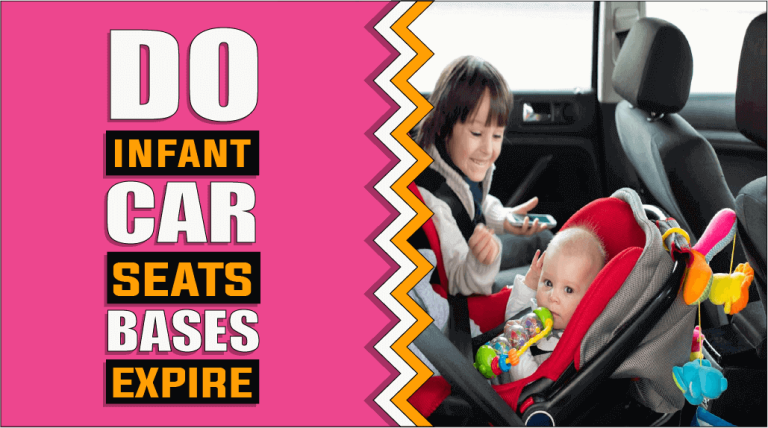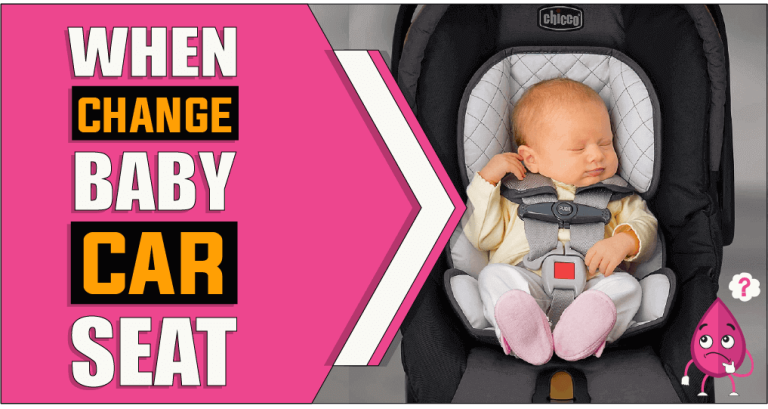Is Car Seat Safe For Newborn Spine – The Truth Reveals
As a parent, it’s natural to worry about the safety of your newborn baby. You want to do everything you can to ensure they’re protected and secure at all times, especially when in the car. One of the most important things you need to consider is whether or not their car seat is safe for their spine development. It may seem obvious – an infant has a very fragile back – but there’s much more to it than ensuring they have a good fit in properly installed seats! In this blog post, we’ll explore whether is car seat safe for newborn spine”, how to install a car seat for newborns safely, what common mistakes parents make when installing car seats, and much more. Let’s get started!
Let’s explore whether is car seat safe for newborn spine
Car seats are an essential piece of equipment for parents that want to keep their newborn safe and secure when traveling. However, many new parents struggle with whether car seats are safe for their infant’s spine. The short answer is yes; most car seats are safe for a newborn’s spine.
When a baby is in an infant seat, the spine is held in a curved “C” shape, which helps to protect it against the force of impact during a crash. The straps are also designed to support and cushion the baby’s head and neck. Additionally, most car seats have adjustable shoulder height straps that ensure your newborn is seated correctly.
To properly secure your newborn’s spine, the car seat must fit correctly and be used by the manufacturer’s instructions. If possible, parents should take their baby to a certified child safety technician who can ensure their car seat is installed correctly and check for any recalled models.
The American Academy of Pediatrics (AAP) also recommends that infants be rear-facing in a car seat until they reach the age of 2 or the maximum weight and height limits listed on the car seat’s label. It helps to better protect their spine by distributing crash forces over the head, neck, and torso. It also ensures that their head, neck, and spine are better protected against the side-impact forces of a crash. Ultimately, car seats can be safe for your newborn’s spine if properly fitted and installed according to the manufacturer’s instructions. Parents should also ensure their baby is always rear-facing until they reach the appropriate age and weight limits.
Overall, car seats can be safe for newborn spines if installed correctly and used by the manufacturer’s instructions. Additionally, ensuring that your baby is rear-facing until they reach the appropriate age or weight limit is vital. When in doubt, parents should consult with a certified child safety technician who can provide additional guidance and check for any recalled models.
What is the importance of car seat safety for newborns?
Car seat safety is of the utmost importance for newborns. Ensuring that infants are correctly secured in their car seats helps to prevent injuries and fatalities in motor vehicle accidents. It also gives parents peace of mind that their little ones will be safe while traveling. Consider the following tips to ensure that your newborn is safely secured in a car seat.
1: Choose a car seat appropriate for your child’s age, weight, and height. Infants must be placed in rear-facing car seats until they reach the seat’s maximum height and weight limits. Once this is reached, the infant can switch to a forward-facing car seat with a harness.
2: Make sure the car seat is installed correctly. Use the vehicle’s owner’s manual or check with your local fire department for assistance. Infants should be secured in a rear-facing car seat in the backseat of the car and strapped in snugly to ensure that their head, neck, hips, and spine are all correctly aligned.
3: Ensure that the straps are always correctly positioned and fastened. The harness straps should be snug against the baby’s body; if you can fit more than two fingers between your baby and the harness, it is too loose and needs to be adjusted. The harness chest clip should be placed at armpit level and aligned in the middle of the baby’s chest.
4: Monitor your baby’s growth and replace car seats as needed. Infants grow quickly, so monitoring their height and weight is vital to ensure they are outgrowing their car seat. The manufacturer’s instructions list each car seat’s maximum weight and height, so replace it as soon as your baby reaches either of those limits.
5: Always wear a seat belt yourself. Set a good example by wearing your seat belt whenever you are in the car. It will teach your child that safety always comes first and that it is essential to follow the rules.
By following these tips and adequately securing your newborn in a car seat, you can ensure their safety is your top priority. Car seats are designed to keep infants safe while traveling, so always read the instructions and use them correctly.
How to safely install a car seat for a newborn?
Installing a car seat for a newborn is an important task that should not be taken lightly. It is essential to ensure your child’s safety and follow the manufacturer’s instructions carefully to install the car seat correctly.
1: Review the User Manual:
Before installing a car seat, it is essential to review the user manual thoroughly. It will help you understand the instructions required for your particular model and how to use all its features correctly.
2: Choose an Appropriate Spot:
Choosing an appropriate spot in the car is essential to install the car seat. Rear-facing car seats should always be installed in the vehicle’s backseat, never in the front. Select a spot with no active airbags and secure the seat with your vehicle’s lap belt or lower anchors if available.
3: Securely Attach:
Once you have selected the appropriate spot, securely attach the car seat to your vehicle. Ensure that all straps and buckles are correctly secured and that the car seat is snug against the seat. You can use a pool noodle or rolled-up towel underneath the car seat’s base if needed to get the right height and angle.
4: Ensure Safety Harness is Tight Enough:
Once you have secured the car seat to your vehicle, it’s time to adjust the safety harness around your baby. The straps should be tight enough so that only one finger can fit between your baby and the straps. Make sure that all of the harness straps and buckles are correctly secured before every ride.
5: Test the Car Seat:
Once you have installed and adjusted the car seat, it’s time to test it. Push down on the center of the car seat base with your hand as if you were pushing a stroller. If there is more than one inch of movement, the car seat is insecure, and you must adjust it.
These steps will help ensure your baby’s car seat is installed correctly and safely. Regularly checking your manufacturer’s instructions for updates or changes is essential. Installing a car seat for your newborn correctly ensures that your baby is safe and secure every time they are in the car.
What common mistakes do parents make when installing car seats?
When it comes to the safety of our children, car seats are an essential part of keeping them secure while on the road. Unfortunately, many parents make common mistakes when installing car seats that can put their children at risk. Below are some of the most common errors:
1. Not reading the instructions –
Many car seats come with thorough instructions, but parents often don’t take the time to read them carefully before attempting to install the car seat. Not taking the time to understand how a car seat should be installed can lead to an incorrect installation, putting your child at risk while in your vehicle.
2. Installing using LATCH instead of a seat belt –
The LATCH system, or Lower Anchors and Tethers for Children, is a convenient way to install a car seat without using the vehicle’s seat belt. However, many parents choose to use LATCH exclusively when installing their child’s car seat despite receiving mixed results. In some cases, using only LATCH can be more dangerous than using the seatbelt, so it’s essential to read the instructions to determine which method is safest.
3. Not following car seat weight and height limits –
It’s important to check each car seat’s weight and height limits to ensure that your child is safe while riding in their car seat. If the car seat is too small, it may not provide enough support for your child while in the car. If the car seat is too large, it may not be snug enough to keep them secure in the event of an accident.
4. Not checking for recalls –
Car seats can sometimes experience a recall if they are found to have malfunctioned or unsafe parts. It’s essential to check for any recalls on your car seat before installing it to ensure it is safe for your child.
5. Not tightening the straps –
When installing a car seat, you’ll need to ensure that all straps are tight enough so the car seat can’t move more than one inch in any direction. Many parents tend to forget about this step, but it is essential for keeping your child secure while on the road. It’s important to take the time to ensure that your car seat is installed correctly.
These tips can help you avoid common mistakes and keep your child safe while riding in the car. However, if you’re unsure about correctly installing a car seat, it’s always best to consult the instructions or have a professional examine the seat. By taking the time to understand your car seat and ensure that it is installed correctly, you can help keep your child safe on the road.
Tips for keeping your baby safe in the car?
Keeping your baby safe in the car requires planning and knowledge about best practices. Here are some tips for keeping your newborn or infant safe on the road.
1. Always use an approved car seat:
Ensure you use a properly installed car seat that meets current safety standards when traveling with your infant. The car seat should fit your baby’s height and weight properly, with all straps securely tightened. It is also essential to read the manufacturer’s instructions for installation and use to ensure your infant is safe in the car.
2. Position the car seat correctly:
When positioning the car seat, ensure it is in the rear-facing position. It will provide the most protection for your baby and the best visibility for you and any other passengers. The car seat should also be placed in the backseat’s center to minimize crash forces on your infant.
3. Use a chest clip:
Using a chest clip when you have an infant in the car is essential. It will help keep your baby securely in place and prevent its arms and legs from getting caught in any straps or buckles.
4. Secure the seat properly:
Secure the car seat properly before each trip using the vehicle’s seat belt or LATCH system. It will ensure that your infant is correctly secured in the car and reduce the risk of injury if you are involved in an accident.
5. Educate yourself:
It is essential to stay up-to-date on recommended safety measures for infants in cars. Research current laws and regulations regarding car seats, safety tips, and best practices. It will help you ensure your baby is safe while traveling in the car.
By following these tips, you can ensure that your infant is safely secured during each ride in the car. Staying informed and up-to-date on safety measures can also give you peace of mind that your little one is in good hands.
Relevant Questions:
The car seat is designed to be safe for newborns and infants. It has been tested and certified to meet federal safety standards. However, always check the manufacturer’s instructions before installing the car seat. It’s essential to ensure you install it correctly for your baby’s safety.
To protect your baby’s spine, make sure to support their head, neck, and back when carrying them or lifting them. Additionally, ensuring the crib mattress is firm and free of soft objects can help prevent spinal issues. Finally, always use a car seat when in the car with your baby. These measures will help keep your baby’s spine safe.
When used correctly, baby carriers are considered safe for spine health. Following safety, instructions are important as ensuring the carrier fits your body and the baby’s size perfectly. Additionally, parents should be aware of their own physical limits when carrying a baby in a carrier and take frequent breaks if necessary. Generally, it’s best to avoid carrying the baby in a carrier for prolonged periods.
Conclusion Paragraph
Regarding car seat safety for newborns, it’s essential to double-check that your baby is in the correct position and secure in their seat. Understanding how to install their car seat correctly and following simple steps will ensure your baby stays safe and sound when riding in the car. If there is uncertainty or doubt about whether or not a child seat is correctly installed, always look for a qualified technician who can assist. Although the safety features of modern-day car seats are advanced, no one knows what will happen during an unexpected accident. Is car seat safe for newborn spine? Parents must take every precaution while keeping their precious cargo safe and sound.

